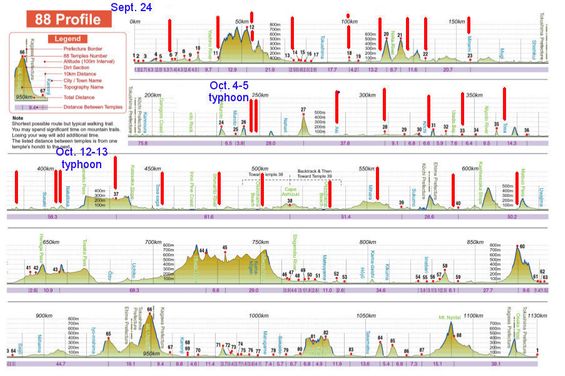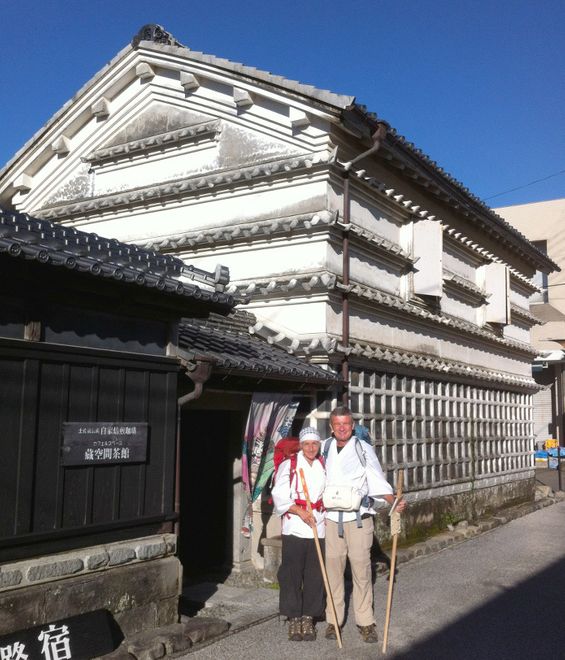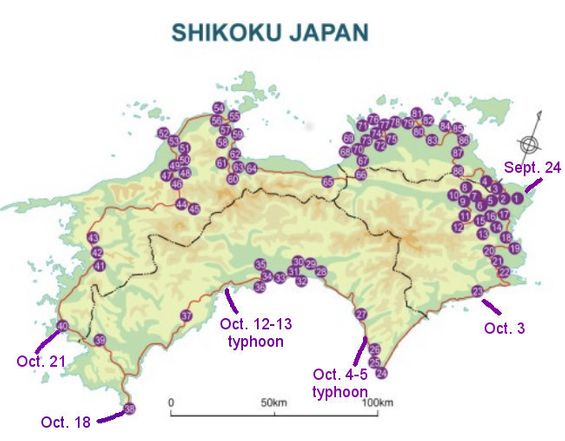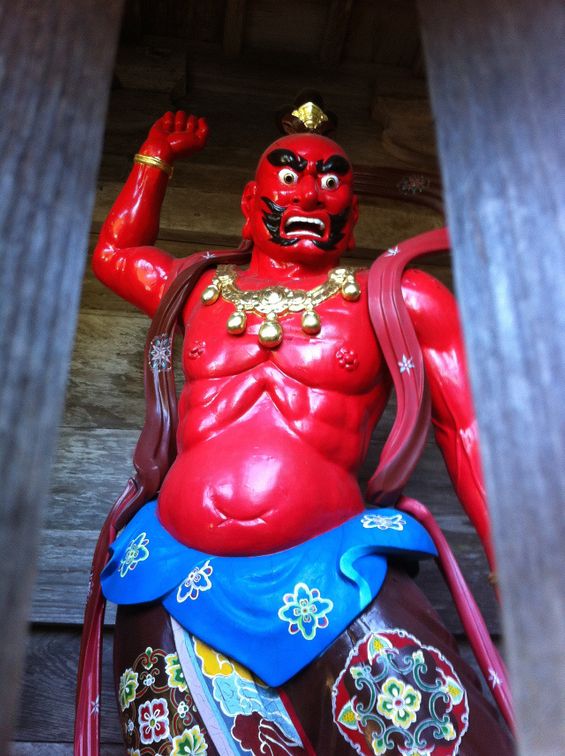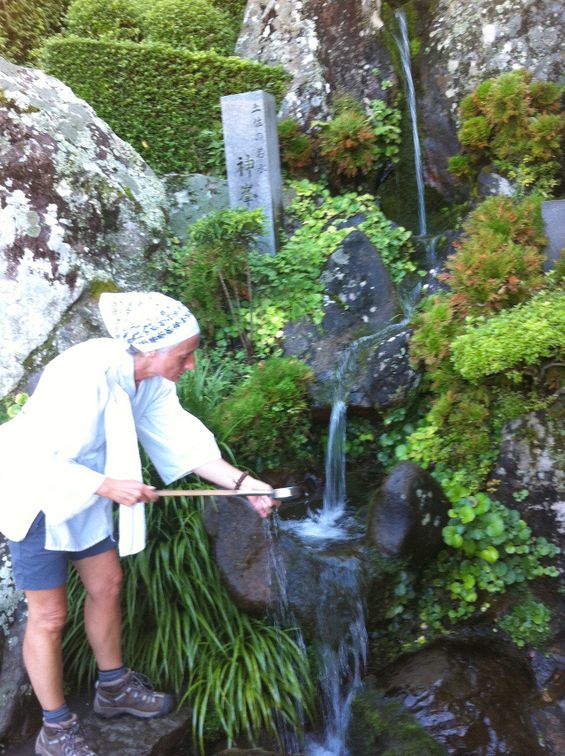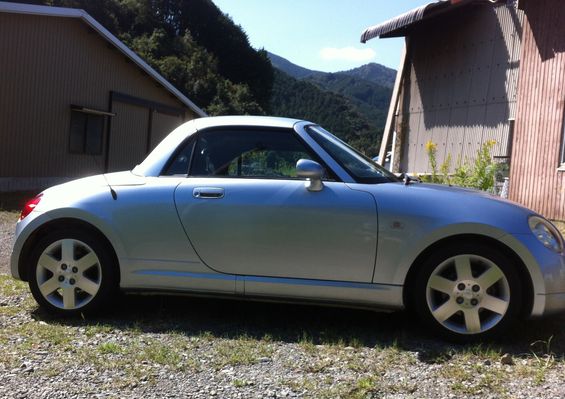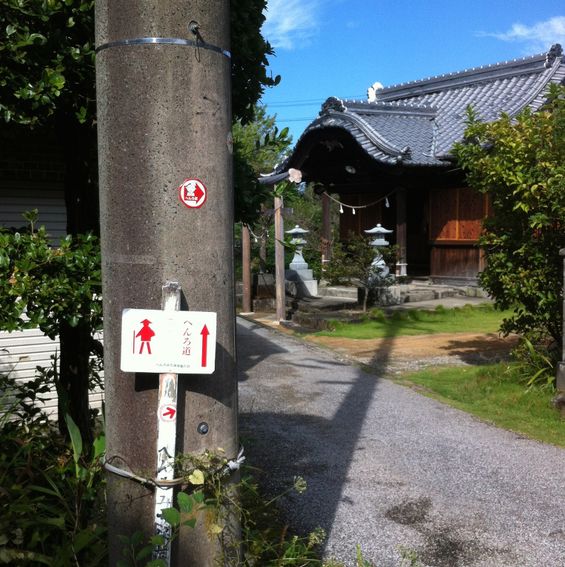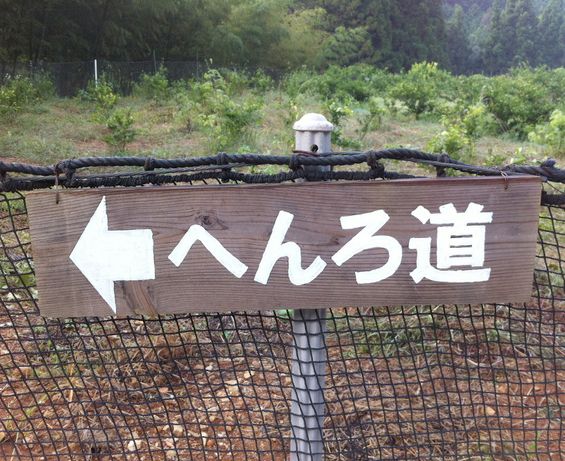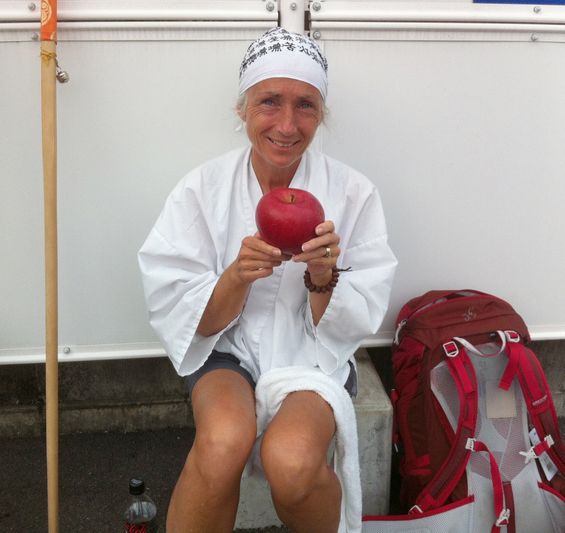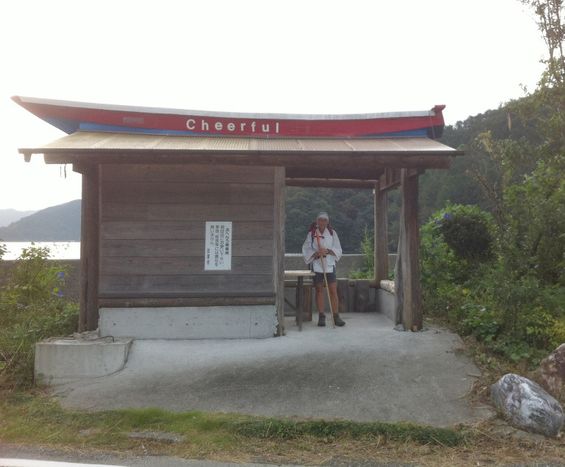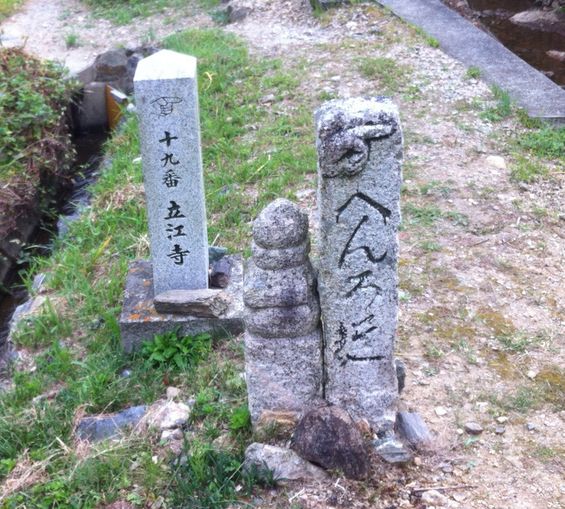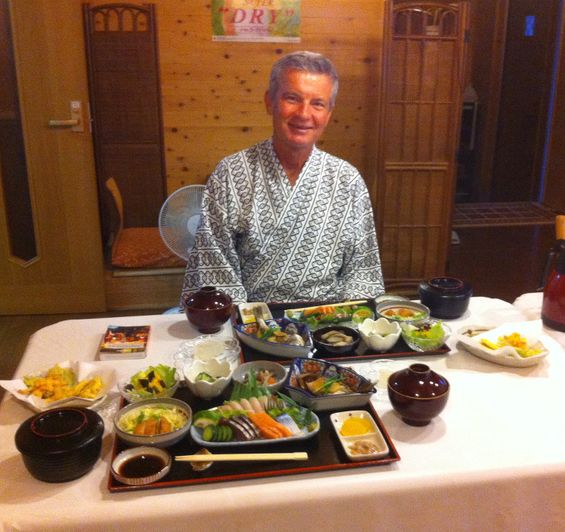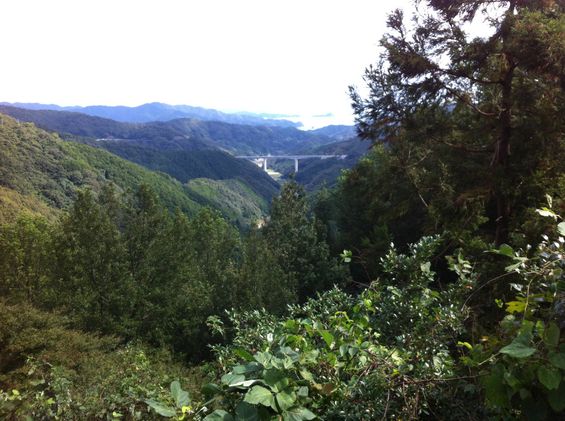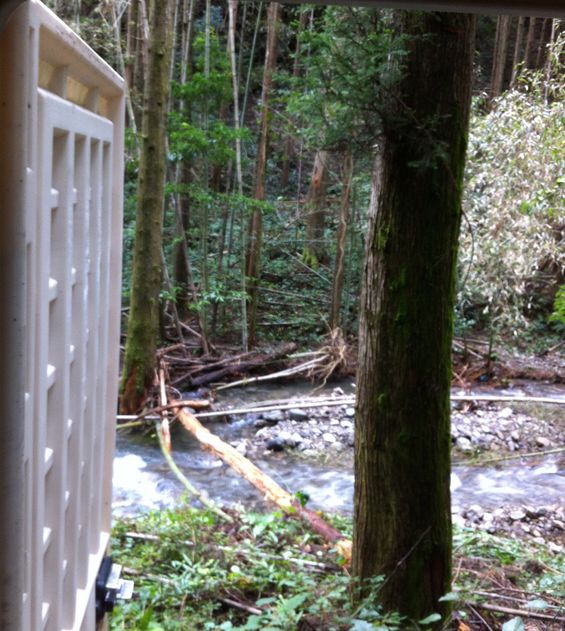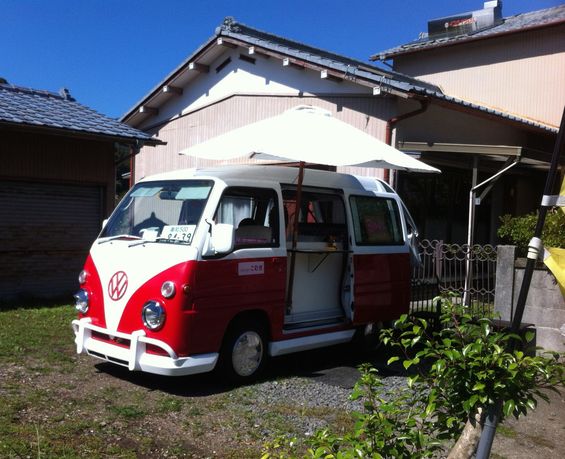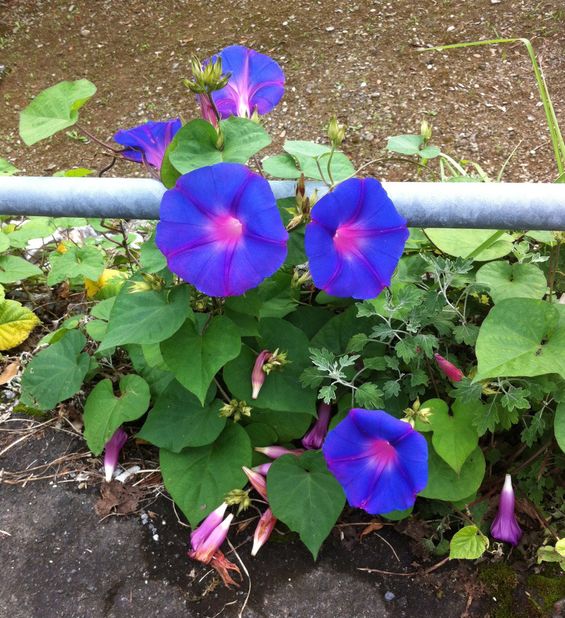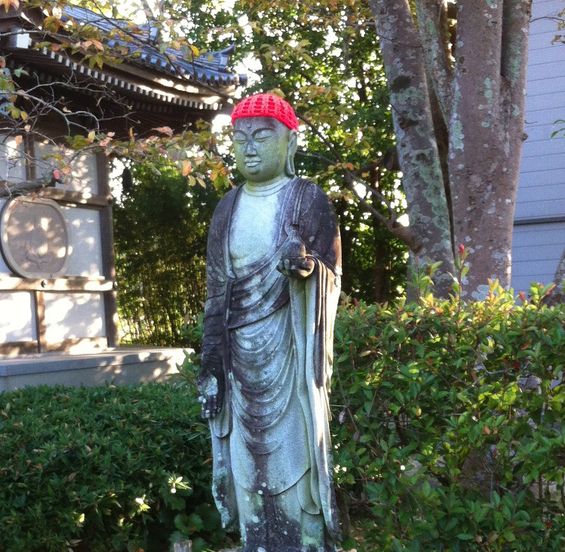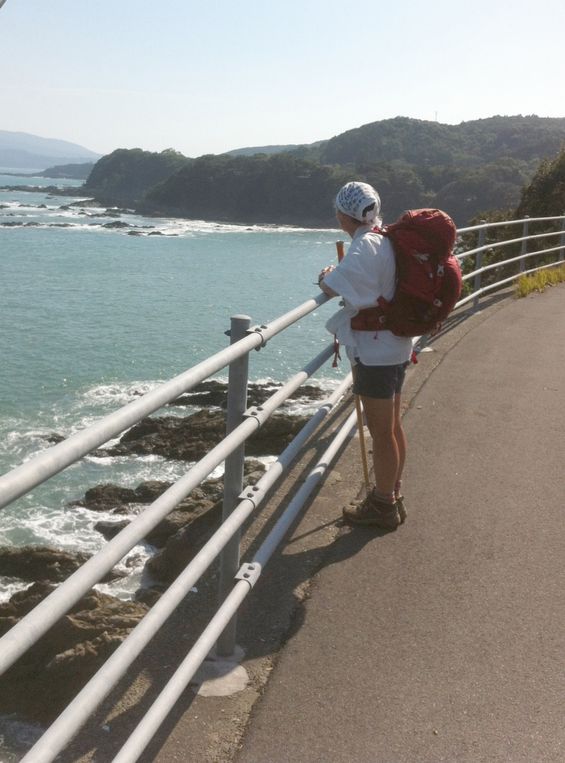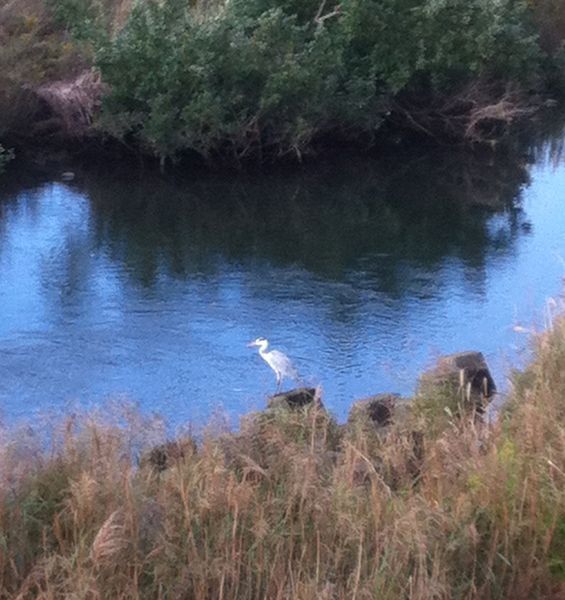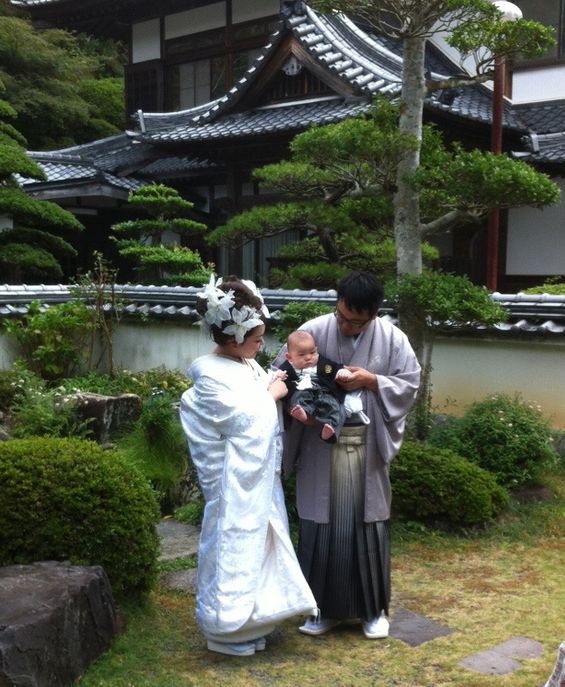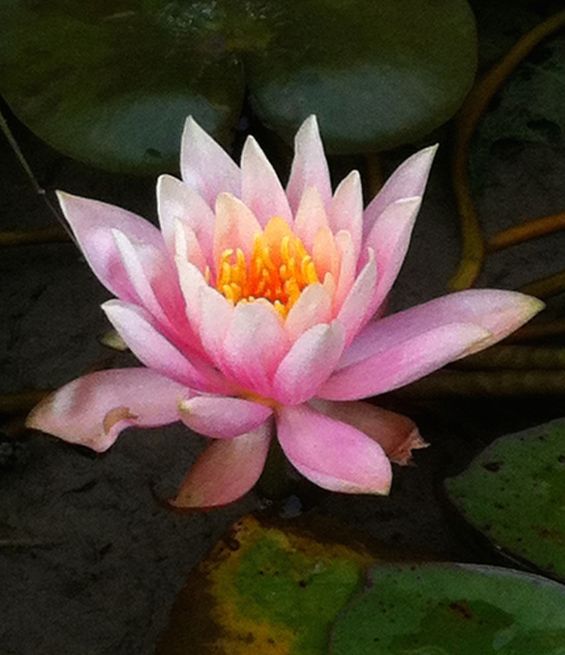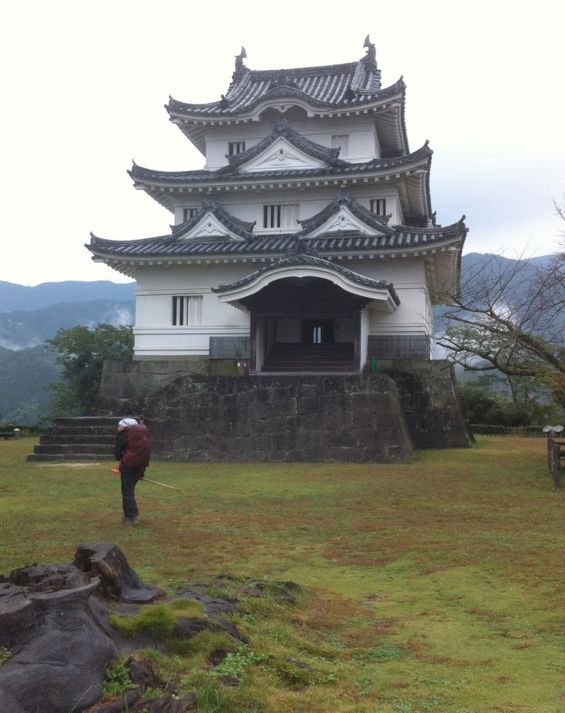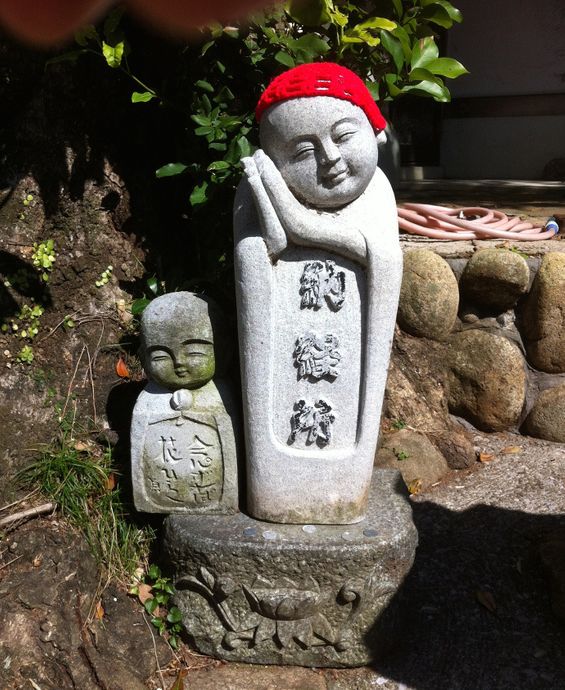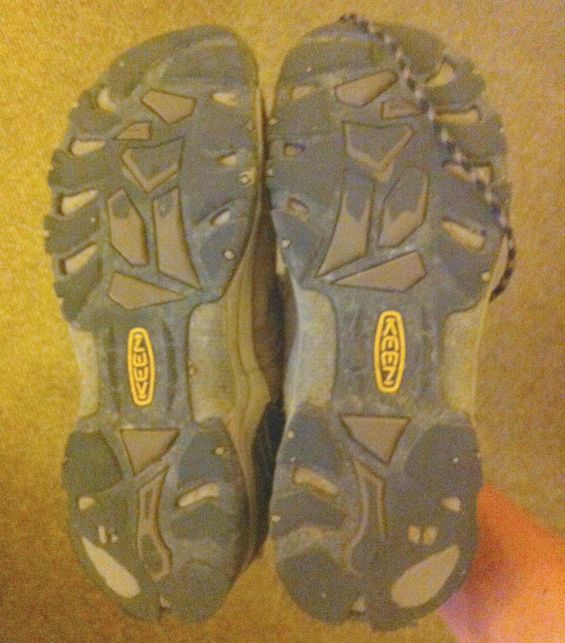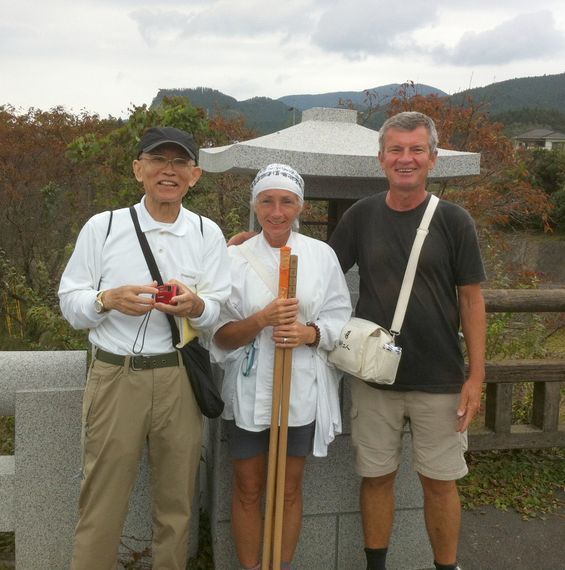Shikoku: Oct.2014
Typhoon Phanfone, the 18th of the season, blew past Japan on Oct. 5 an 6. We made a run for it on the 4th by train and bus to get to temple 24 on one of the tips of the island that sticks out into the Pacific, then walked past Temple 26. We settled into a traditional minshuku (Japanese dinner and bed and breakfast) just up from Temple 26 to ride it out. The morning of the 6th was sunny where we were so we kept walking. More about typhoon 19, Vongfong, below.
Morning after the typhoon. The old traditional Japanese houses are amazing - very heavy wood structure with ceramic shingles. The long sides open completely up with sliding panels (we were in a house in an inner compound that you can't see here). The inside set of panels have a wood panel at the bottom, then about 18” of glass, then paper all the way to the ceiling. There are a second set of sliding panels about a meter outside these that are all glass panes. Finally, outside that are solid wood panels. When all the panels are closed up, we were snug in a little cocoon - couldn’t hear much noise,and very cosy!
We were on Shikoku for two typhoons about 8 days apart. We stayed two nights in the same place for each typhoon while the typhoons blew over.
To get into any temple, you need to pass through the temple gate - a heavy wooden archway with 'guardhouses' on each side. Inside the guardhouses are Un-gyō and A-gyō, the temple guardians. You wouldn't want to mess with these guys....
Once you're through the gate and have rung the Temple bell, you wash your hands and rinse your mouth with the little dippers provided.
Another cool car - Daihatsu Copan.
Our second typhoon, Vongfong, was the 19th of the season. It went right over us - when the eye was above us the wind stopped and the sky was blue, so we went and soaked in the hot tub!
Henro signs: We find our way by following the henro (pilgrim) signs. The most common are red arrows.
Henro signs 2: This is pretty much the only Japanese we can reliably read - it says "henro michi", which means pilgrim road. The first three characters are sounds: he - n - ro and the last ideograph represents 'road'.
One of the customs of this route is "osettai", which are gifts given to pilgrims. We've been given a lot of oranges, and the day before the last typhoon, a couple of women stopped their car in the middle of the roadway, rolled down their window, and gave us two of the biggest apples we'd ever seen...!
There are henro huts along the way for spending the night, for those who don't want or can't afford the minshukus.
Henro signs 3: There are old and new stone markers along the way, with fingers pointing in the right direction.
The minshukus are great - when you get there, you strip down and put on a dressing gown (yakuta), do your laundry, have a beer (well, John anyways...!), then go have a shower and soak in the hot tub. Then they feed you dinner - this was one of the best ever, 'though we can't tell you exactly what we ate...
View on the way to Temple 37. It took about an hour to walk from under the superhighway bridge to the top of this hill. it's a bit hard to tell, but the ocean is in the background.
Best outhouse view.
Roadside squid vendor.
This flower grows everywhere. We watched a hummingbird moth crawling into some of these, but it escaped before we thought about taking a photo...!
It seems perfectly fine in Japan to dress up Buddhas and other statues... can't recall ever seeing Jesus in a knit toque!
Rocks in the front, rocks in the back, Rox in the middle... we've been walking along the coast a lot (not surprising on an island...!) We passed several surfing beaches - at least half the surfers are women.
The last step of the temple visits is getting the temple stamps and calligraphy.
Large blue herons, equally big white egrets and many other water birds are everywhere.
Babies are brought to the temples several times during their infancy for special ceremonies.
Water lily.
We are having the most amazing time! We're wandering around a Japanese island where hardly anyone speaks any English, with only a couple of words of Japanese (Origato - thank-you - we use 30 or 40 times a day!) and a Japanese-English phrase book. We need to make reservations for every night since most places are dinner-and-bed-and-breakfast, and they need to know about preparing dinner and don't like surprises. We have so far managed to stumble along, asking the Mama-san of one place to make a reservation at another place by means of a note one kind lady wrote for us early in the trip. Amazing!
400-year-old castle.
Sleepy Jizo.
Snow White and the 7 buddhas...
Half-way through, and one pair of shoes gone. 90% of the Shikoku pilgrimage route is on asphalt which wears down the heels after 500 or 600 km.
Hideo Kumano is one of the many Japanese who have helped us out along the way - he helped John find new shoes.
There are lots and lots of private koi ponds - sometimes even as part of a river or stream. Koi can get very big like the gold-coloured fellow here, and can live for over 200 years. Th gold guy let us pet him, but then ignored us since we weren't feeding him...
This page is getting full so please go to our new page called Shikoku: Nov. (it also includes the last few of days of October).
